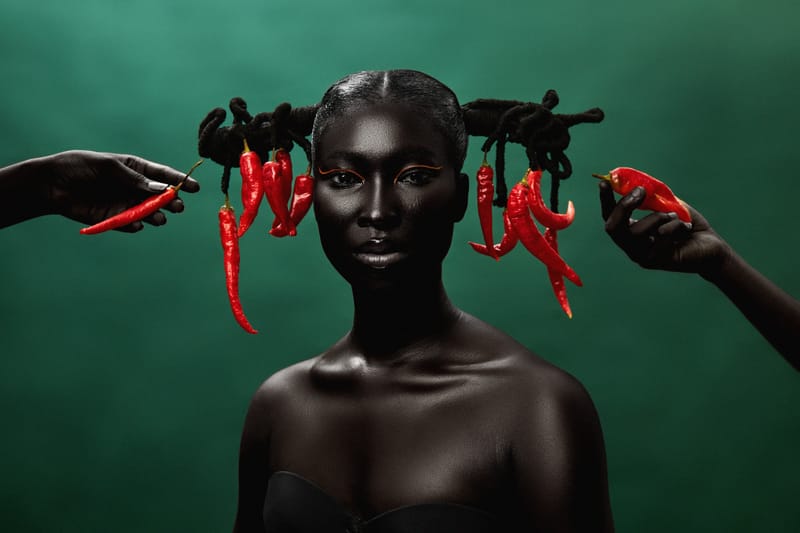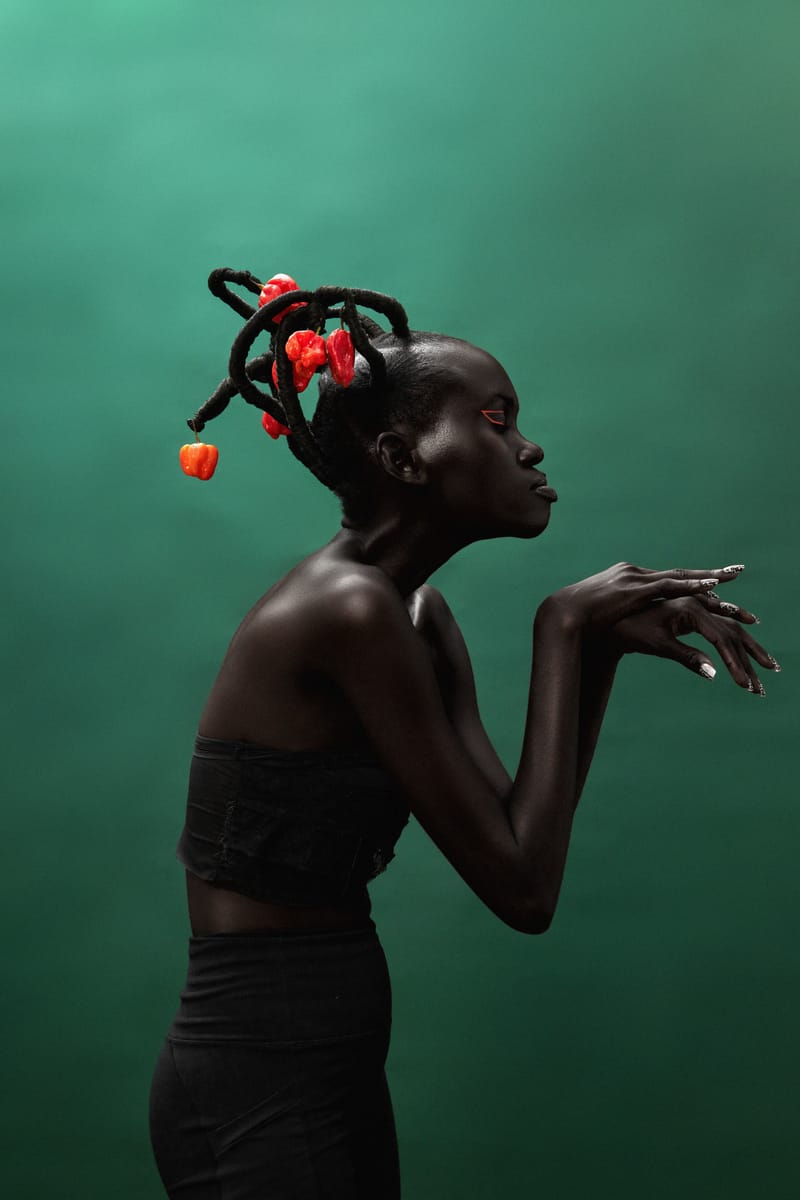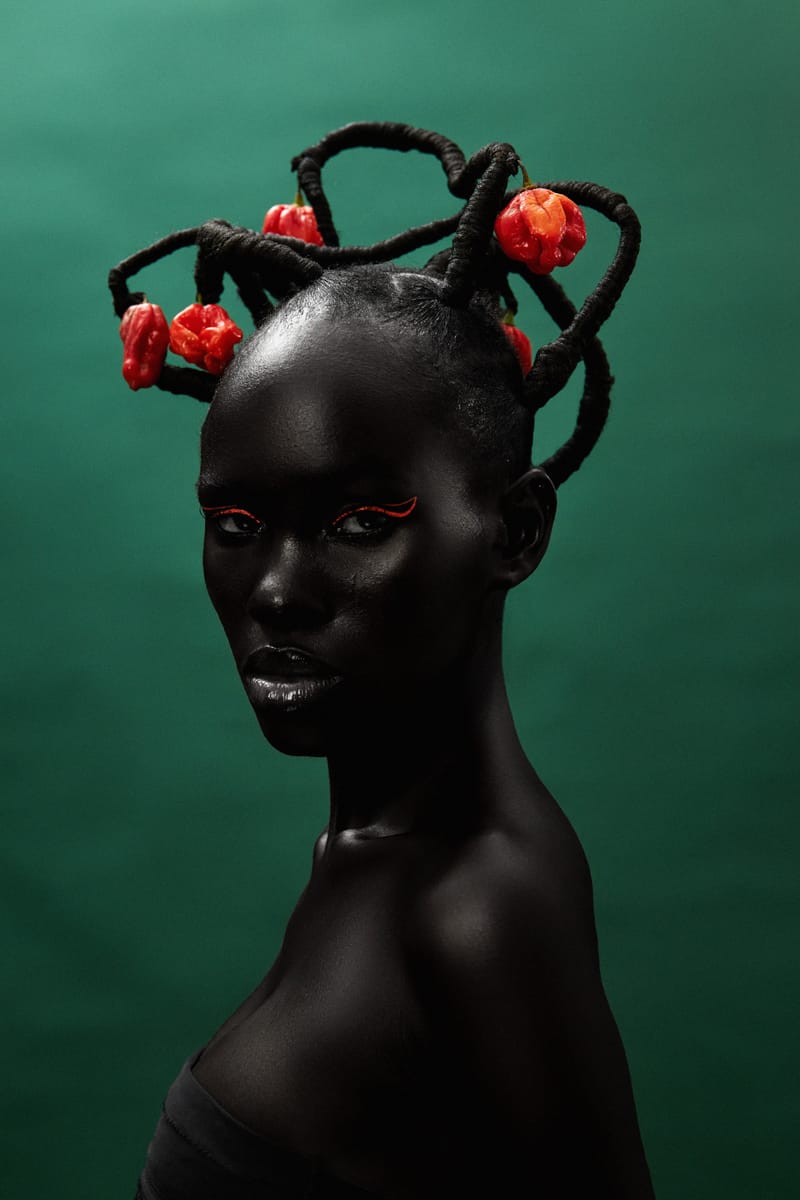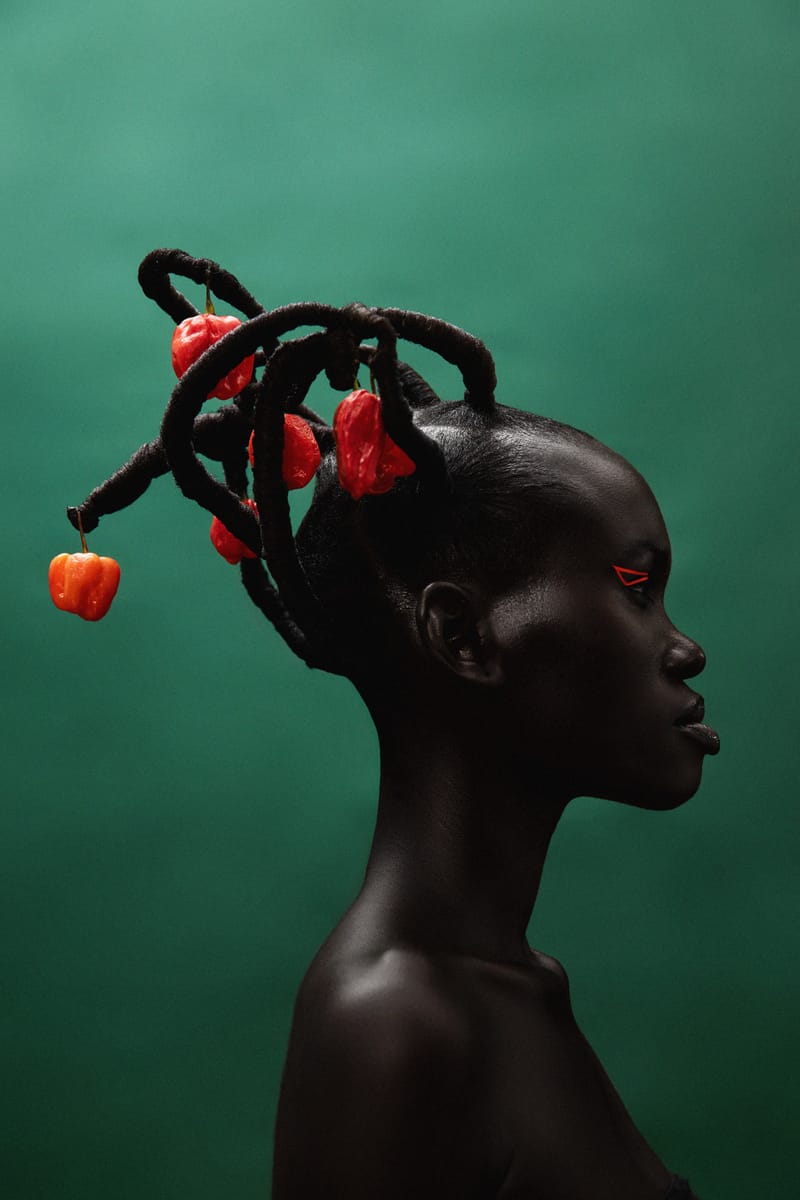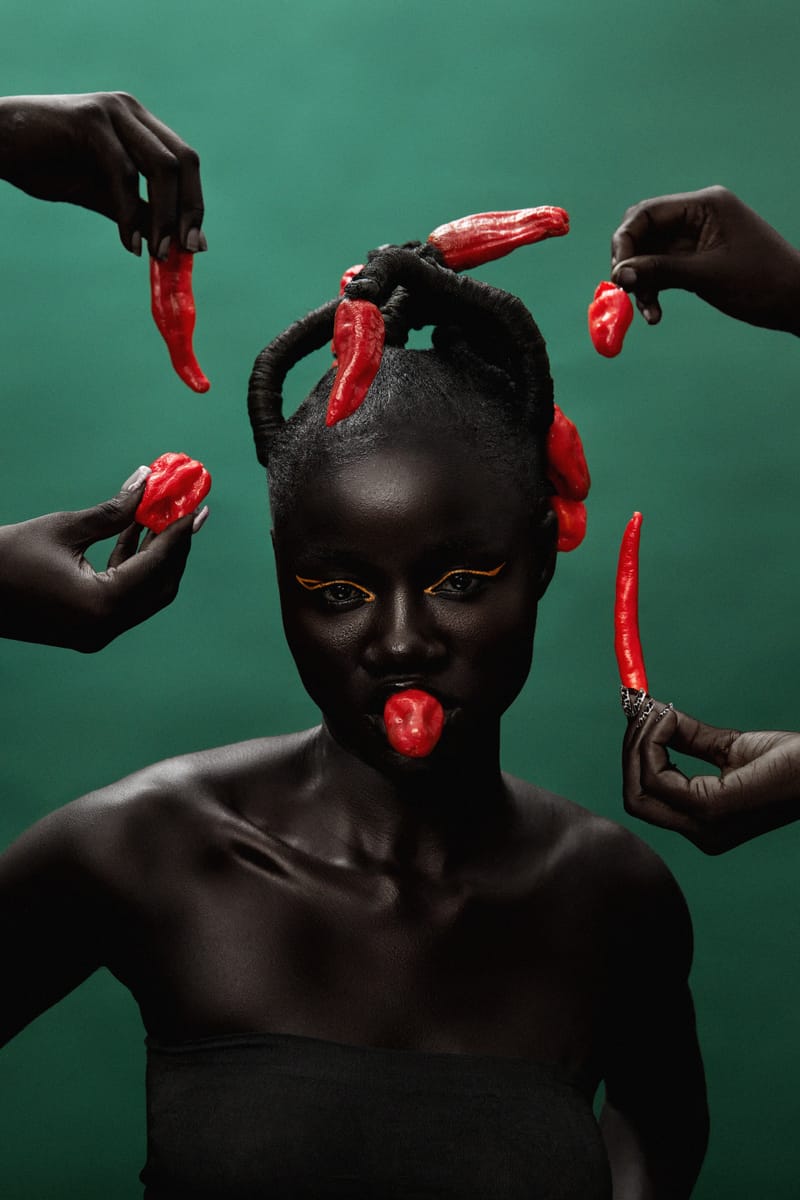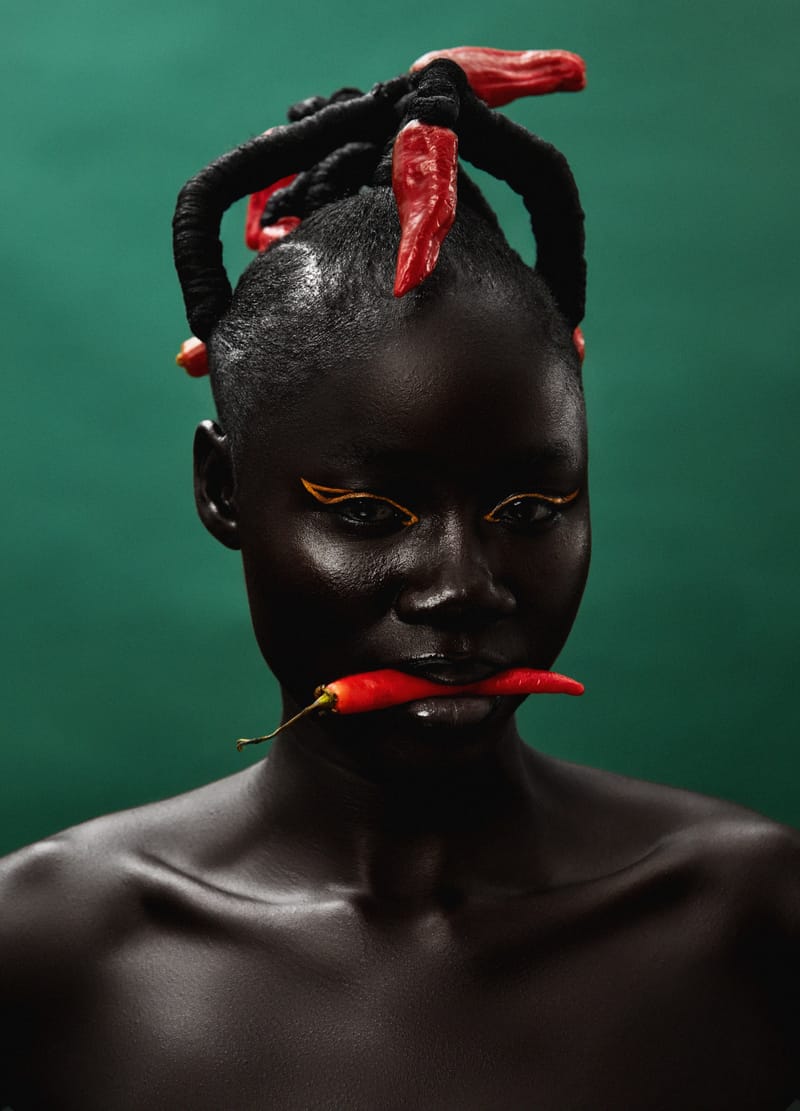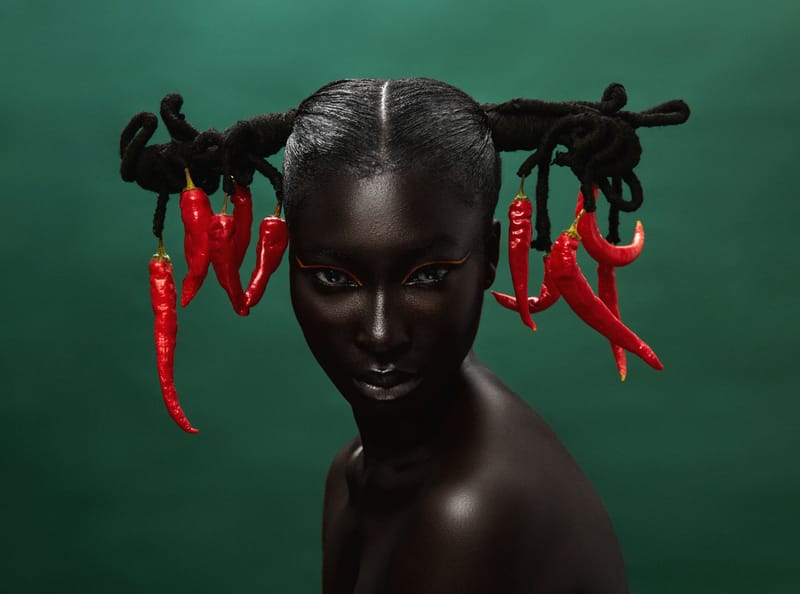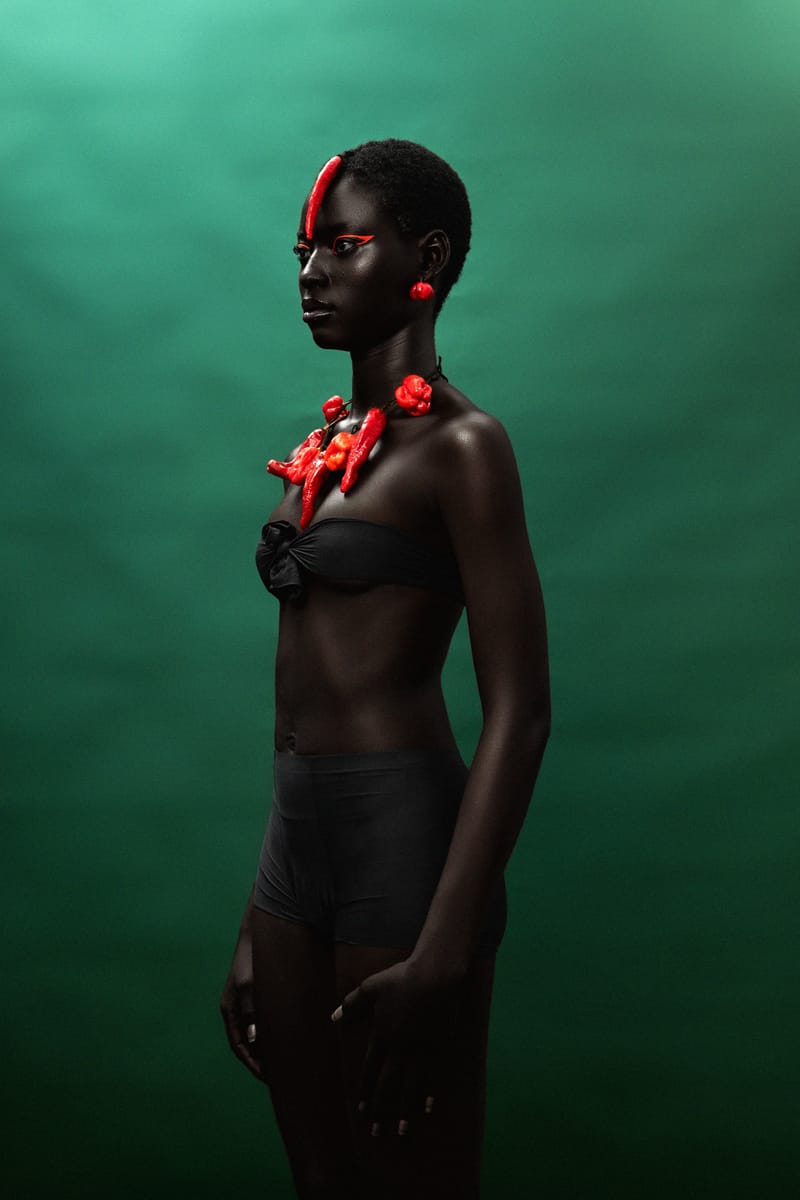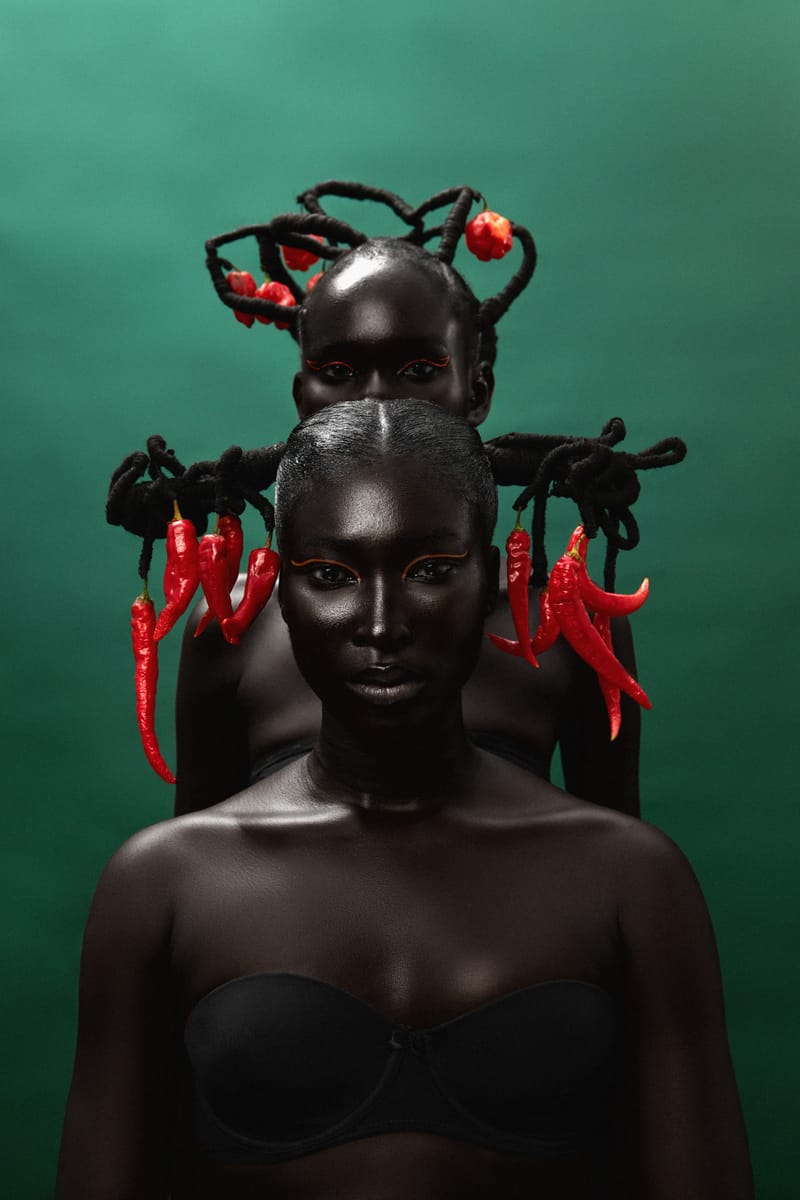Ata Ire
Photography & Story / Abayomi Shogbade
Models: Akogun Damilola (@dami__ann), Temitope Odunayo (@olatemmzy), Ameen Naheemah (@naimah000), Olugbo Jane (@plain_janeofficial), Mistura Akeem (@mimi_lane) Make up artist: Taiwo Kayode (@tee_glamm) Hairstylist: Goodness Josef (@funmbij)
Ata Ire
In Yoruba culture, food is more than sustenance; it is a reflection of heritage, identity, and spirituality. Among the essential elements of Yoruba cuisine, ata (pepper) holds a unique place, not only for its fiery taste but also for its cultural and symbolic significance. It is said in Yoruba land, “Emi to o je ata, emi yepere ni”-“The spirit that doesn’t eat pepper is a feeble one.” This adage speaks to a deep-rooted belief that ata nourishes not just the body but also the spirit, instilling strength, resilience, and vitality in those who consume it. Ata Ire, meaning “the fire that brings good fortune,” is a fine art photography series that explores this profound connection between ata, Yoruba cultural heritage, and the strength of women. Through bold, conceptual portraits, this body of work visually represents the generational tradition of ata, the role of Yoruba women in passing down this heritage, and the enduring power of dark skin, identity, and cultural preservation. The Essence of Ata Ire The Yoruba people’s love for pepper goes beyond taste, it is tied to a belief system that strength and endurance are cultivated through the consumption of spice. Ata has been woven into the very fabric of Yoruba existence, becoming a symbol of power, perseverance, and the ability to withstand life’s trials. Both men and women eat ata not only for its physical nourishment but because it is believed to fortify the soul, making one strong enough to face challenges. Yet, the custodians of this tradition are women the nurturers, the ones who prepare the meals that sustain their families and communities. Yoruba women are the keepers of this generational knowledge, ensuring that the fire of ata and all it represents never fades. Ata Ire is a tribute to them and their role in shaping culture, family, and identity. The Ata Ire series is a fusion of fine art and fashion photography, stripped down to its purest elements to emphasize the power of dark skin, traditional Yoruba hairstyles, and the deep cultural meaning of ata. The concept is built around three key visual elements: 1. Dark Skin as a Canvas of Strength The series accentuates the richness of dark skin, celebrating its depth, beauty, and resilience. There is no wardrobe in this project, the focus remains on the natural elegance of the models, highlighting their presence, strength, and connection to culture. 2. Hair as a Symbol of Cultural Continuity The models wear intricate Yoruba hairstyles adorned with ata, signifying the fusion of tradition and identity. Hair, much like ata, carries history, styles that have been passed down from mothers to daughters, just as the tradition of cooking with ata has been preserved across generations. 3. Pepper as a Cultural Emblem In each portrait, ata is not just an object - it is a statement. Whether delicately woven into the hair or positioned symbolically within the frame, ata is presented as an integral part of Yoruba life, linking past, present, and future. Beyond the pepper, while Ata Ire draws inspiration from the cultural significance of ata, it is not just about food. This project serves as a visual metaphor for resilience, cultural endurance, and the strength of Black identity. The fire of ata is the fire of generations of Yoruba women, the fire of a culture that has thrived despite adversity, and the fire that continues to burn in the stories we tell and the traditions we uphold. This series is a celebration of Yoruba heritage but also an invitation to reflect on the role of women in preserving culture worldwide. Through Ata Ire, we see how something as simple as pepper carries centuries of history, identity, and spiritual meaning, a tradition not just for the Yoruba people but for all who believe in the power of heritage and storytelling.
